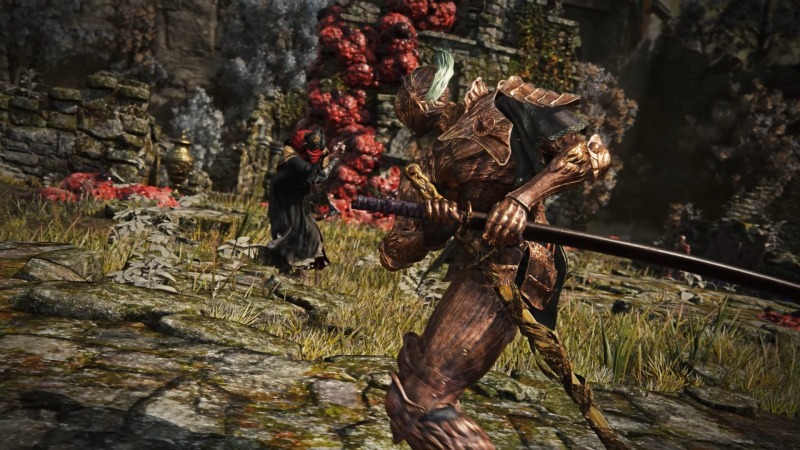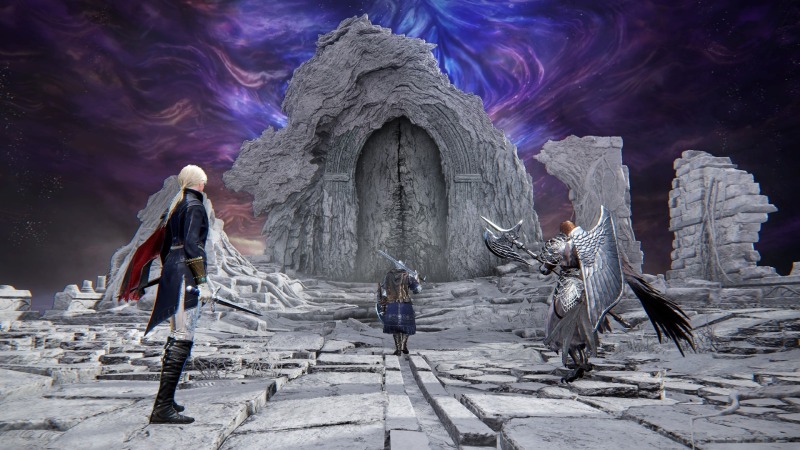The Gang’s All Here with Elden Ring Nightreign—And, Surprisingly, It Works
Don't You Know What the Night Can Reign?
Are you one of the many people out there who tried to get into From Software’s Souls games—Dark Souls, Elden Ring, Bloodborne, etc.—but couldn’t crack it? Maybe they were too methodical, too mysterious, too solitary, or just plain too hard, but for any number of reasons you couldn’t connect to these very particular games and their esoteric, often punishing nature, no matter how loudly and incessantly its hardcore fans raved about them. If that’s you, and you’re still wondering what you’re missing out on, you might finally have an opening you can relate to. Elden Ring Nightreign is made with players like you in mind. It’s a Souls game for people who don’t play Souls games.
It’s immediately clear what that means the very first time you play it. Nightreign isn’t meant to be a solo adventure. You can play it that way, and it works fine to an extent, but you’ll also realize something’s missing—that it’s not really built for single players, even if it can accommodate them. At its core Nightreign is a co-op joint, intended for three players to team up and head off on precisely timed, firmly regimented expeditions whose player progression is almost entirely confined to that specific run.
Souls games have had a social component since at least 2009, when Demon’s Souls built a cult following on the PlayStation 3. It was usually kept somewhat at a distance, though, with players cryptically helping each other through ghostly messages delivered from beyond the digital pale. You could pop into another player’s game to help them directly, but it was limited and fleeting; you weren’t partners or squadmates, your relationship was not built to last, and you were always clearly a temporary figure in another player’s adventure—an online phantom blowing in the wind.
Nightreign really wants you to join a team. Its challenges are prohibitively hard alone, and although they’re still substantial as a trio, everything feels smoother and more attainable with friends. Its eight characters have specific, well-defined skills that are designed in part with each other in mind, and finding and developing those synergistic strategies is key to a genuinely successful run. You can’t do that on your own. Nightreign is Souls as a party game, although with From’s familiar arm’s length reluctance to direct, easy communication keeping an air of mystery about the whole thing.
Nightreign also plays much faster than any earlier Souls game. Your character naturally moves faster than Elden Ring’s Tarnished, who comparatively feels like they’re knee-deep in molasses. Nightreign also has a spring button, letting your character move even faster, straight-up tearing ass across the hills and fields of Limveld. Combat is also a more hurried, less cautious endeavor, and even with the traditional stamina bar holding you back you’ll still need to be a lot quicker and persistent with your attacks. Add in forgiving updates like the elimination of fall damage and the ability to jump quickly up the sides of hills and buildings and Nightreign becomes a Souls game unlike any other.
It still wants the Souls faithful to log in, though, and so it’ll be very familiar to them in many ways. It’s vitally important to level up your character, and that’s done in the way it always is in Souls games: you earn points (they’re called runes here) for every enemy you defeat, and can use them to level up at bonfires that also serve as save points. If you die you’ll lose all the runes you’ve stored up, as well as lose a level; if you return to where you died, you can pick those lost runes back up, sometimes only after defeating an enemy that claimed them for themselves. Even this is sped up, though; instead of deciding which individual character attribute to increase with every level, leveling up in Nightreign will boost every attribute. It borrows the idea and rough format of how progression works in Elden Ring, but streamlines it to a couple of quick button presses. Other complexities are sanded away, too, like the once-customary weight limit for your inventory (there’s none here, although you’re limited in total inventory slots).

From veterans will also recognize the various bits and pieces from older games used to assemble Nightreign. You’ll be intimately familiar not just with the game’s aesthetic, but the basics of its combat, and how it places a heavy emphasis on defense and parrying. The world, its music, the way you move in it, the enemies you face and weapons and items you acquire are all pulled straight from the games you know, which might give you a false sense of security.
Playing Nightreign when you’re a Souls fan is like returning to a town you used to live in after many years away. Some of the familiar landmarks and buildings are still standing, but with big changes to the specific businesses within them and to the people who live in the neighborhood. It’s recognizable enough to feel comfortable on the surface, but so different under the hood that it turns jarring when you first start to play it. Is Nightreign a sinistar doppelganger for Elden Ring, a twin stranger with the right look but an utterly different and unpredictable nature lurking within? Yeah. Sure. Let’s go with that.
Oh, wait. Did I mention that it also pulls a crucial idea from battle royale games? Because it does. Every expedition is split into three days. As night falls on the first two days, the playable region of Limveld persistently shrinks. A sea of blue flame creeps across the map, doing consistent damage to any players stuck in it, and thus forcing your team into smaller and smaller plots of safe ground. Eventually, at the end of the first two nights, the flame will have engulfed all but a single arena-sized bit of land, at which point you’ll face off with that night’s boss. If your team can take them out, you’ll move on to the next day, with the third day consisting entirely of one massive battle with the expedition’s final boss. If you can beat that third night boss, you’ve completed that expedition, and will acquire some permanent upgrades for your characters—and also potentially progress the overarching storyline for whichever of the eight playable characters you used in that game.
That’s a basic but broadly comprehensive overview of how this thing plays. What makes it really work are the notes in between, though—the eight playable characters, their unique abilities, how they interact with each other, and how they can be changed and fine-tuned over time. This is where Nightreign’s surprising depth comes from, one that isn’t really scratched until after a significant amount of time and many expeditions.
